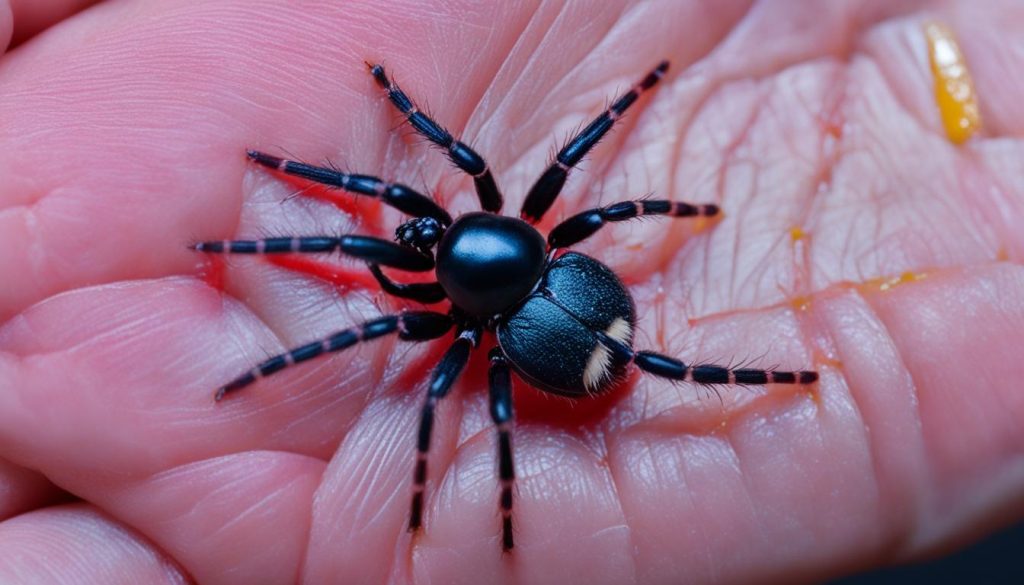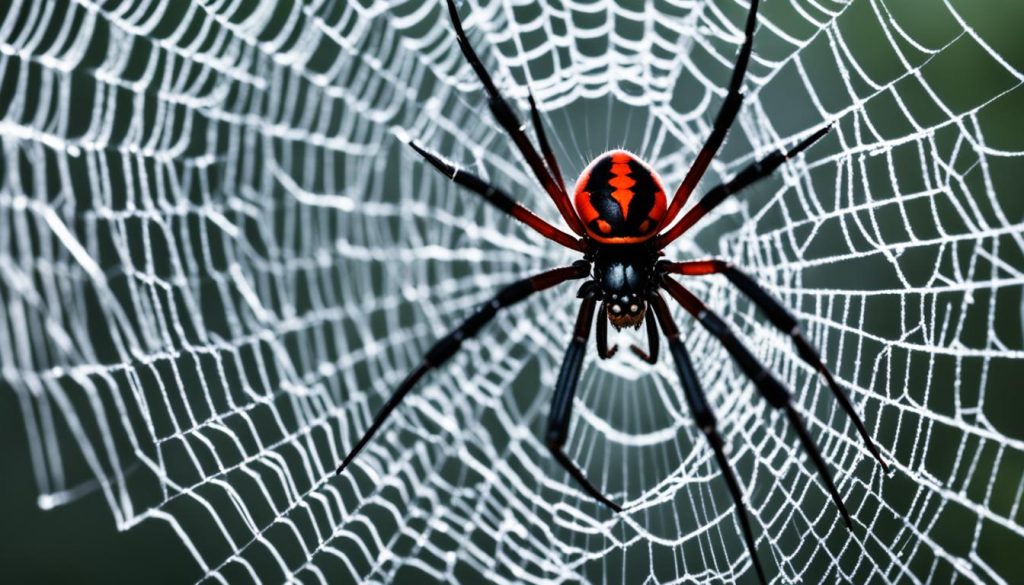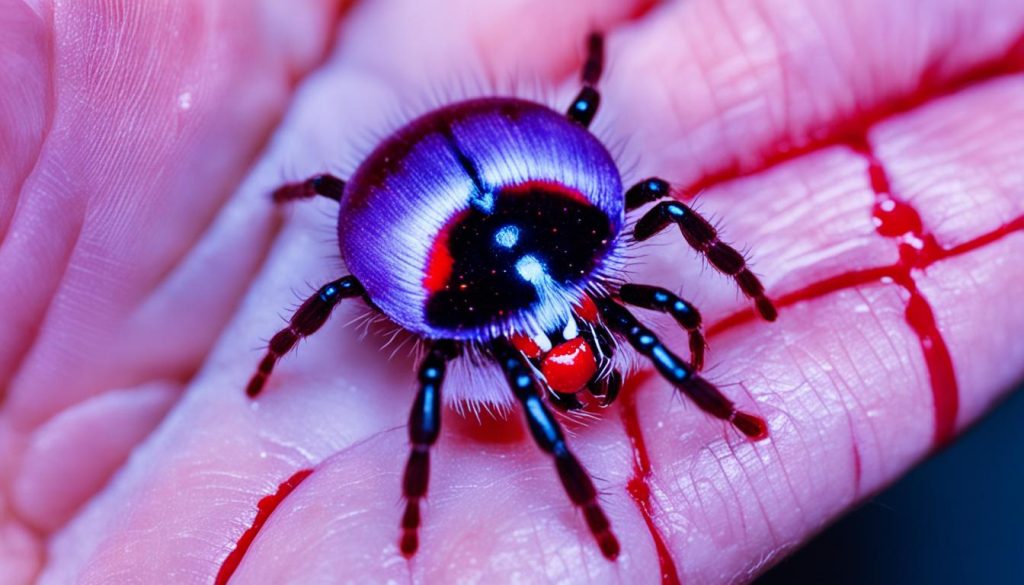What Happens if You Get Bit by a Black Widow?
The black widow spider is a medium-sized spider, with two common species in the United States: the southern black widow and the northern black widow. These spiders are active at night and prefer dark corners or crevices like garages. When disturbed, they may bite, injecting venom that affects the victim’s nervous system.
Symptoms of a black widow bite can include pain, swelling, redness, muscle pain and stiffness, nausea or vomiting, trouble breathing, belly pain or cramping, heavy sweating, rash and itching, swollen eyelids, weakness or shaking, and difficulty moving your legs. If you experience serious symptoms, seek immediate medical help.
Black widow bites can be fatal in young children and older people. In the meantime, you can wash the bite area with soap and water, apply a cold washcloth or ice pack, take an over-the-counter pain reliever, elevate the affected limb, and apply antibiotic cream or lotion. Capture and take the spider to your doctor if possible for identification.
Black Widow Spider Bite Treatment and Complications
If you suspect a black widow bite, it is crucial to seek medical help. The doctor will review your symptoms and decide on appropriate treatment. Depending on the severity of symptoms, muscle relaxants or stronger pain medicine may be prescribed. In rare cases, antivenin may be used to neutralize the venom and prevent further harm. However, antivenin can cause side effects and requires monitoring after administration.
Complications from black widow spider bites are uncommon but can include severe allergic reactions, secondary infections, and long-term muscle pain or weakness. It is important to closely monitor the bite area for any signs of infection, such as increased redness, swelling, or pus. In case of an allergic reaction, seek immediate medical attention.
Prevention is key in reducing the risk of black widow bites. Keeping storage areas clean and avoiding woodpiles and fallen tree branches can help minimize encounters with these spiders. Shake out gardening gloves, boots, and shoes before wearing them, especially if they have been stored in garages, basements, or sheds. Always wear gloves when handling wood, mulch, or empty flower pots. If working in a garage or shed, or under a porch or deck, wear a hat for added protection. Regularly inspect and clean potential hiding spots for black widow spiders, such as wood piles, brush piles, corners of garages and sheds, and under flowerpots.
Black Widow Spider Bite Treatment Options
| Treatment Options | Benefits | Considerations |
|---|---|---|
| Prescribed muscle relaxants or stronger pain medicine | Relieves muscle pain and stiffness | May cause drowsiness or other side effects |
| Antivenin | Neutralizes venom and prevents further harm | Can cause side effects, requires monitoring |

Although complications from black widow spider bites are rare, it is important to be aware of the potential risks and seek medical attention if necessary. By taking preventative measures and promptly addressing any symptoms, you can minimize the impact of black widow spider bites on your health and well-being.
Black Widow Spider Bite Prevention Tips
If you want to avoid black widow spider bites, it is crucial to take specific precautions. By following these preventive measures, you can significantly reduce the risk of encountering these venomous spiders:
- Shake out gardening gloves, boots, and shoes: Before wearing them, especially if they have been stored in garages, basements, or sheds. This action helps dislodge any hidden spiders and prevent bites.
- Wear gloves when handling wood, mulch, or empty flower pots: Black widow spiders often reside in piles of wood or hidden areas like mulch and flower pots. Protect your hands and minimize the chances of being bitten by wearing gloves during these activities.
- Wear a hat when working in enclosed spaces: If you’re working in a garage, shed, or under a porch or deck, wear a hat to provide additional protection against potential spider bites.
- Regularly inspect and clean potential hiding spots: Conduct routine checks of wood piles, brush piles, corners of garages and sheds, and areas under flowerpots. Remove any debris, clutter, or spider webs to eliminate potential hiding spots for black widows. This preventive measure helps minimize encounters and bites.
- Seek professional pest control advice: If you notice a significant infestation of black widow spiders on your property, consulting a professional pest control applicator can provide expert guidance for effective and safe management.
By following these prevention tips, you can proactively safeguard yourself and your surroundings from black widow spider bites.
Black Widow Spider Bite Prevention Checklist
Use this checklist to ensure you’re taking all necessary steps to prevent black widow spider bites:
| Prevention Measures | Status |
|---|---|
| Shake out gardening gloves, boots, and shoes | ✓ |
| Wear gloves when handling wood, mulch, or flower pots | ✓ |
| Wear a hat when working in enclosed spaces | ✓ |
| Regularly inspect and clean potential hiding spots | ✓ |
| Seek professional pest control advice (if needed) | ✓ |
By ensuring that all items are marked with a checkmark (✓), you can be confident in your efforts to prevent black widow spider bites.

Real-Life Black Widow Spider Bite Experience.
A real-life example of a black widow spider bite involved a 12-year-old girl who felt a prick on her arm after putting on her jacket. Shortly after, she developed pain at the site and in her back. The parents identified a spider resembling a black widow. Within 45 minutes, the child was taken to the emergency room with back, stomach, and chest spasms, severe pain, high blood pressure, and a fast heart rate. The treatment included intravenous morphine, sedation, antihistamines, muscle relaxants, and steroids to control pain and muscle spasms. The child remained in the hospital for three days with ongoing pain and spasms.

Black Widow Spider Bite Treatment and Complications
Table: Black Widow Spider Bite Treatment and Complications
| Treatment | Complications |
|---|---|
| Medical evaluation | Severe allergic reactions |
| Pain management | Secondary infections |
| Antivenin (in rare cases) | Long-term muscle pain or weakness |
If you suspect a black widow bite, it is crucial to seek medical help. The doctor will review your symptoms and decide on appropriate treatment. Depending on the severity of symptoms, muscle relaxants or stronger pain medicine may be prescribed. In rare cases, antivenin may be used to neutralize the venom and prevent further harm. However, antivenin can cause side effects and requires monitoring after administration. Complications from black widow spider bites are uncommon but can include severe allergic reactions, secondary infections, and long-term muscle pain or weakness. Prevention is key in reducing the risk of black widow bites. Keeping storage areas clean and avoiding woodpiles and fallen tree branches can help minimize encounters with these spiders.
Conclusion
Black widow spider bites can result in significant symptoms and complications. Prompt medical attention is crucial to assess the severity of symptoms and provide appropriate treatment. While complications are rare, they can include severe allergic reactions, infections, and long-term muscle pain or weakness.
Preventive measures, such as practicing good hygiene, keeping storage areas clean, and avoiding potential hiding spots for black widow spiders, can help reduce the risk of bites. It is important to be aware of the signs and symptoms of a black widow bite and seek medical help if necessary.
FAQ
1. What are the symptoms of a black widow bite?
Symptoms of a black widow bite can include pain, swelling, redness, muscle pain and stiffness, nausea or vomiting, trouble breathing, belly pain or cramping, heavy sweating, rash and itching, swollen eyelids, weakness or shaking, and difficulty moving your legs.
2. What should I do if I suspect a black widow bite?
If you experience serious symptoms, seek immediate medical help. In the meantime, you can wash the bite area with soap and water, apply a cold washcloth or ice pack, take an over-the-counter pain reliever, elevate the affected limb, and apply antibiotic cream or lotion.
3. How is a black widow bite treated?
If you suspect a black widow bite, it is crucial to seek medical help. The doctor will review your symptoms and decide on appropriate treatment. Depending on the severity of symptoms, muscle relaxants or stronger pain medicine may be prescribed. In rare cases, antivenin may be used to neutralize the venom and prevent further harm.
4. What are the complications of a black widow spider bite?
Complications from black widow spider bites are uncommon but can include severe allergic reactions, secondary infections, and long-term muscle pain or weakness.
5. How can I prevent black widow spider bites?
To prevent black widow spider bites, it is important to take certain precautions. Shake out gardening gloves, boots, and shoes before wearing them, always wear gloves when handling wood or mulch, regularly inspect and clean potential hiding spots for black widow spiders, and consult a professional pest control applicator for advice if necessary.




